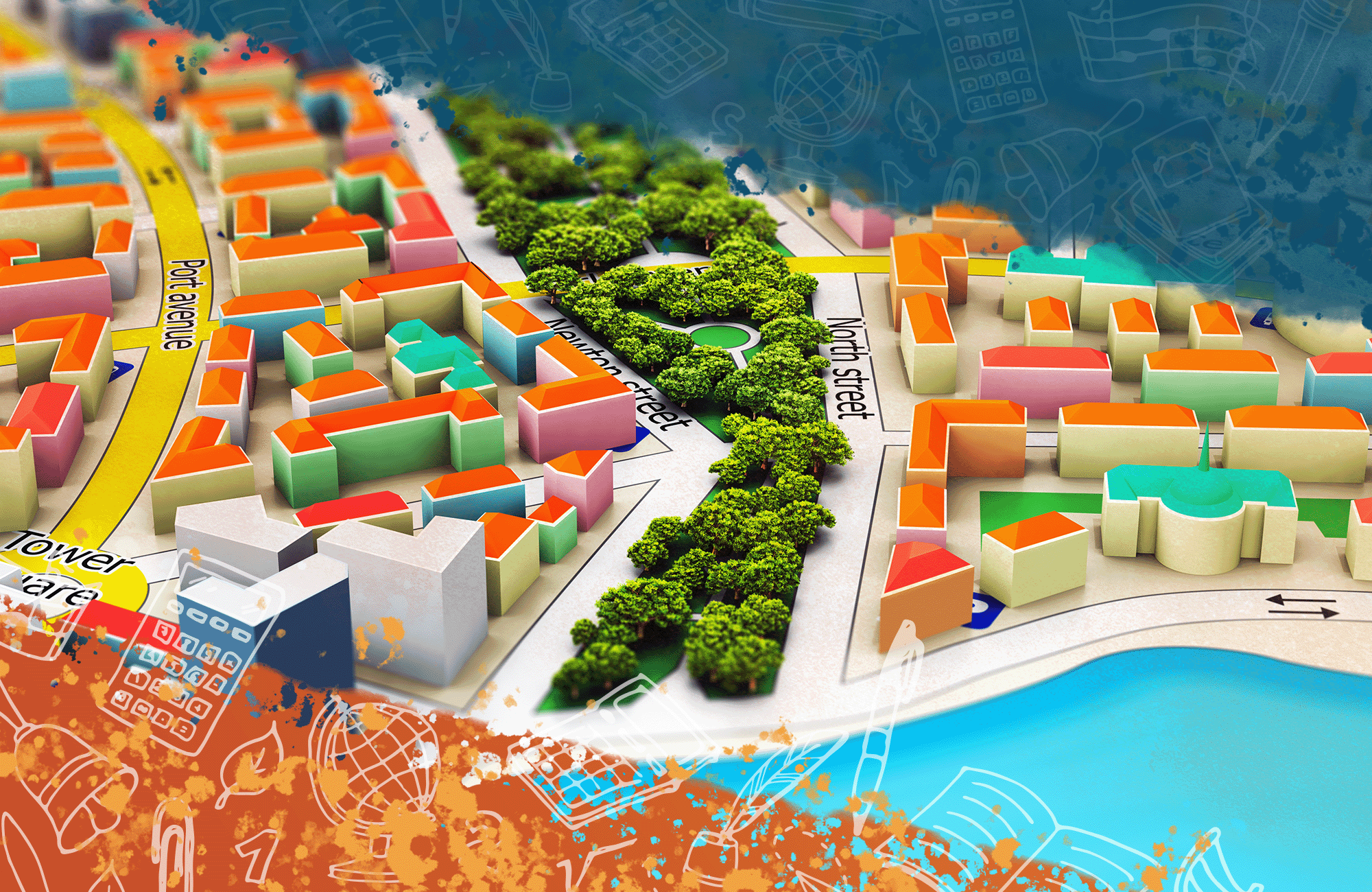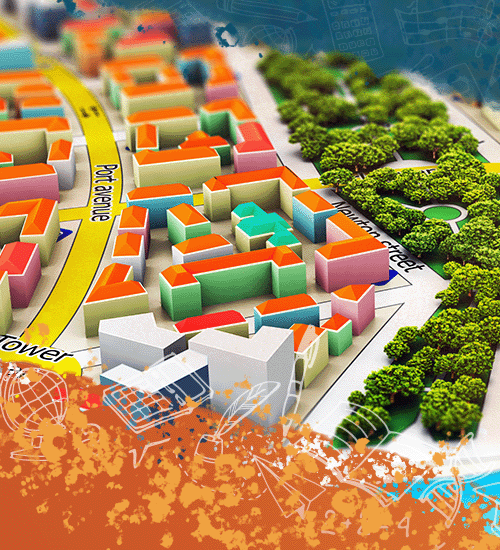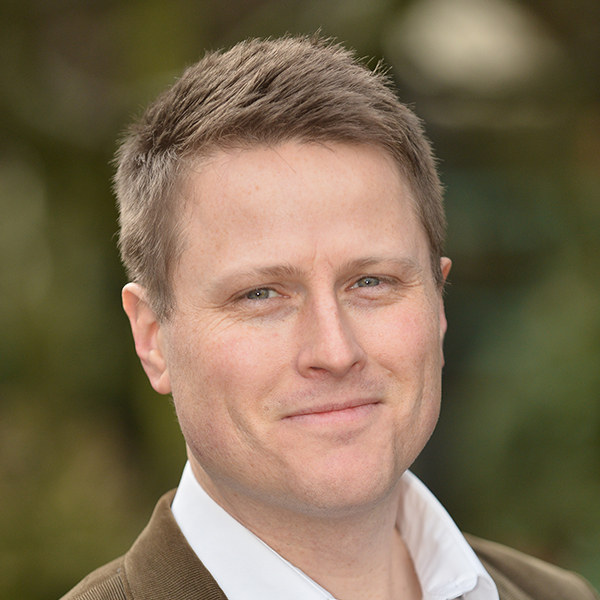

Planning
Planning: What Will the Future Look Like?
What is Planning?
Planning is the study of how people spend time in a built environment. An environment is what’s around you. Sometimes the environment means planet Earth, but it could mean something more specific like a grassy field, your school, or the city or town you live in.
The built environment means a place where people have made the land different by changing something, like when a town builds a new school. Sometimes a built environment is one with no buildings, like a park.
Planners work with cities to make safe and healthy built environments for everyone to enjoy.
Some planners help cities plan for the future by creating rules that guide where things can and can’t be built. Planners might make sure that a school is built near a neighborhood where a lot of children live. Other planners make sure that everyone can enjoy buildings or parks. They also make sure the built environment is safe. Some planners make sure that people can go places in different ways—like in a car, on foot, by bike, or on a bus or a train.
When they make rules and make sure that people follow the rules, planners have to make choices and think about what’s good and bad about their choices. Because there are a lot of things to think about, cities and towns have to decide what is most important for the people who use the built environment. Then the planners make those important things happen.
Planners also have to think about making sure different communities have what they need. A community is a group of people living in an area. Some communities living in a built environment need different things than other communities in the same environment.
Planners help build places where everyone stays safe and is healthy. You can try planning by doing one of the activities below.

Watch the Video
Rural, Suburban, and Urban Lesson for Kids
This video explains important things to know about planning.
Complete the Activities
Activity: Plan a Park
Think about how you would create a park and the communities (types of people) who might us it. Here are some examples of communities and what they need:

Your turn!
- Think of three more types of communities. You can name or draw them on a piece of paper if you want. Then write down what they need.
- If you are stuck, think of communities you are a part of.
Now that you’ve learned about the needs from different communities from public spaces, think of these needs the next time you go to a park. Does the park meet multiple community needs? What needs do you recognize?
Activity: Has Your Environment Changed?
Places change over time, just like people! Sometimes a city tears down a factory that has closed and they build a park instead. Find out how your environment has changed.
Think about what your environment is. It could be your neighborhood, city or town, back yard, or something else.
Find someone older than you to interview like your parent, neighbor, sibling, teacher, or coach. Ask them any of these questions. Or ask them questions you think up.
- How long have you known this environment?
- How has this environment changed?
- Do you like that change? What do you like about it?
- What do you miss about the way it was before?
- What would you like to see happen in this environment in the future?
What did they say? How is their environment different from yours?
Activity: Explore a Day in Your Built Environment
What does one day in your built environment look like? How do you move through it?
Pay attention to the different built environments you see during your day. Write down, draw, or take pictures of what you observe.
At the end of the day, answer these questions:
- What buildings did you see in your built environment?
- Did you see any built environments without buildings, like parks?
- Did you travel? How did you get to the place you traveled to? (A road? A sidewalk?)
- Did you see plants or animals?
- Did you see any rain, wind, clouds, or sunshine?
For an extra challenge, try drawing a map of your built environment, adding details from what you saw during the day.

Meet a Planner
Seth Otto, Principal Planner
What Was Your Favorite Subject in School?
My favorite subject in school was Geography. I like everything about maps, studying how cities are laid out on the landscape and how they grow around mountains, rivers, and lakes.
What Was Your Dream Job as a Kid?
My dream job as a kid was to be a mountain guide. I was very outdoorsy and did a lot of backpacking and hiking with my family. I participated in a mountaineering class in high school that was inspiring to me, and I thought I would be a mountain guide before I went to college.
What Is Your Favorite Thing About Your Job?
My favorite thing about my job is helping communities around the Pacific Northwest to achieve their maximum potential. I like working with communities here in the PNW since I grew up here and I have fond memories of spending time in a lot of these places. I want to make sure that people can work and play here sustainably for generations to come.
What Did You Study in School?
I studied Urban Planning (before that: sociology, statistics, economics) to get this job. I went to school with an interest in politics and culture and urban issues and found a way to apply those in urban planning and design.